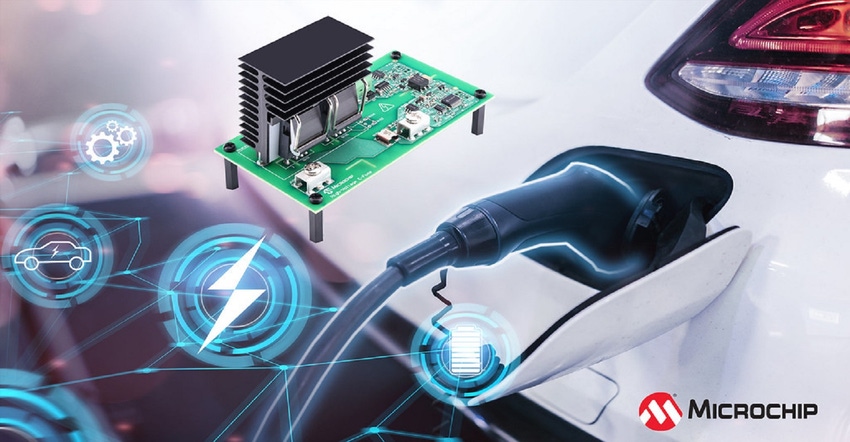Enabled by SiC technology, circuit protection board interrupts peak short-circuit currents faster than mechanical approaches.

Engineers designing high-voltage electrical subsystems in Electric Vehicles and Hybrid Electric Vehicles require a mechanism to protect the high-voltage distribution and loads in the event of an overload condition. To provide a faster and more reliable high-voltage circuit protection solution, Microchip Technology has announced the E-Fuse Demonstrator Board, available in six variants for 400 to 800-V battery systems and with a current rating up to 30 amps.
Due to its high-voltage solid-state design, the E-Fuse demonstrator can detect and interrupt fault currents in microseconds, 100 to 500 times faster than traditional mechanical approaches. The fast response time substantially reduces peak short-circuit currents from tens of kilo-amps to hundreds of amps, thus preventing a fault event from resulting in a hard failure.
According to Clayton Pillion, vice president of Microchip’s silicon carbide business unit, the solid-state design of the E-fuse also alleviates long-term reliability concerns about electromechanical devices for circuit protection, as there is no degradation from mechanical shock, arcing or contact bounce.
With the E-Fuse demonstrator’s resettable feature, designers can easily package an E-Fuse in the vehicle without the burden of design-for-serviceability constraints. This reduces design complexities and enables flexible vehicle packaging to improve BEV/HEV power system distribution.
OEMs can accelerate development of SiC-based auxiliary applications with the E-Fuse demonstrator because of the built-in Local Interconnect Network (LIN) communication interface. The LIN interface enables the configuration of the over-current trip characteristics without the need to modify hardware components, and it also reports diagnostic status.
The E-Fuse demonstrator leverages the performance of Microchip’s SiC MOSFET technology and PIC® microcontrollers’ Core Independent Peripherals (CIPs) with a LIN-based interface. The companion components are automotive-qualified and yield a lower part count and higher reliability over a discrete design.
Microchip supports the E-Fuse Demonstrator Board with MPLAB® X Integrated Development Environment (IDE) to enable customers to quickly develop or debug software. The LIN Serial Analyzer development tool allows customers to easily send and receive serial messages from a PC to the E-Fuse Demonstrator Board.
Spencer Chin is a Senior Editor for Design News covering the electronics beat. He has many years of experience covering developments in components, semiconductors, subsystems, power, and other facets of electronics from both a business/supply-chain and technology perspective. He can be reached at [email protected].
About the Author(s)
You May Also Like





